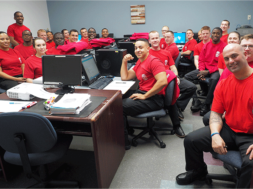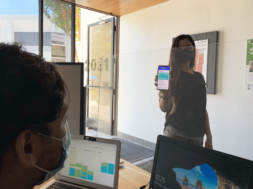
Is Your Degree Program Struggling? The 3 Basic Questions to Answer
By Dale Leatherwood, Higher Education Consultant
As part of my higher education consulting practice I spend a lot of time talking with institutions trying to figure out not only what programs they should add but just as often what current programs they should prune or change. In most situations their overall enrollment is down or stagnant and there are varying levels of success (or lack of) within their roster of degree offerings.
In considering the current program roster, it is crucial to focus energy on either a smaller and more focused list of programs or on specific program areas with high levels of expertise and outcomes.
At that point the institution can effectively consider new programs with high growth potential and benefits for students and employers.
So how do you determine which programs should be kept and which to cut? It’s a very complicated question with a lot of moving parts, and often times the discussion around programs is impacted by all of the various stakeholders involved. My recommendation is to take a step back, look at every program that is not succeeding and ask three simple questions:
- Do not enough people know about it? (lack of awareness)
- Does no one want it? (lack of demand)
- Does no one want ours? (lack of competitiveness)
Lack of awareness
You believe that you have a fantastic program that is cutting edge, has high employer need and is priced just right. The instructors have great industry experience, your Program Advisory group is begging for the curriculum and graduates and the outcomes in terms of placement and gainful employment rates knock it out of the park. But enrollments are low. Worst of all, other schools with this degree are seeing great response in similar markets. In this scenario all of the evidence points to a lack of external marketing or brand awareness, resulting in an inability of producing prospective students.
It’s important to understand that the measurement point for this particular situation is early in the marketing and enrollment process. Data that you can examine include:
- Total budget and budget trends relative to other programs
- Marketing channel trends (spend per channel, response rates per channel)
- Marketing mix relative to the target market (does your IT program have the same mix and budget consideration as your Nursing program?)
- Corporate/employer marketing efforts
- Brand recognition in your market (surveys, focus groups, brand awareness studies)
- Trends in lead volume and conversation rates relative to other programs
- If you have program-specific marketing resources, how stable have they been over time?
Examining these and other questions can help bring the needed push to an otherwise great program.
Lack of demand
Every school has legacy programs where administration, faculty or simply inertia is keeping it on the roster, meaning that they have been around for years despite a steady decline. At one time institutions may have viewed these as “steady as she goes” programs, allowing them to hang around because costs may be predictable or there’s a belief by some stakeholders that it’ll ‘bounce-back’ at some point. These programs have strong marketing budgets, are well understood by admissions and are priced appropriately relative to the market.
The key indicators in this scenario are when employer demand is minimal or the program isn’t succeeding for other institutions.
This can also be a temporary situation, for example the difference between a petroleum engineering degree in 2010 versus today. When oil was well over $100 per gallon the demand for petroleum engineers was through the roof. As oil has dropped to low single digits, that demand has cooled, but everyone understands that it is a cyclical situation and we’ll likely be back to $2.50 gas at some point.
A key thing to keep in mind is the cumulative impact of tempered employer demand combined with a once-hot program. Use the legal field as an example. In 1976, there were over 450,000 attorneys in the United States, and 34,000 new lawyers were graduating law schools on a yearly basis. 35 years later that number had increased to 44,000 yearly grads, and the number of lawyers had grown to over 1.2 million! In the age of law-focused TV shows, increased legal opportunities in a wide variety of sectors, and the impact of Wall Street on legal compensation, the growth in lawyers dramatically outpaced population growth. According to the National Association of Law Placement that all changed by 2011, when less than ½ of grads found a law firm job. The problem was exacerbated by the fact that immediately before the drop in demand there was a massive increase in supply, creating a substantial glut. That same situation exists with some higher education programs such as criminal justice or medical billing and coding. In a sector where gainful employment is paramount and resources are limited, a glut is a very dangerous thing.
Lack of competitiveness
The third scenario is probably the most common. You have a program that seems to be in high demand from students and employers. Your awareness levels seem strong from a marketing perspective, and your brand is well recognized. For some reason, however, you can’t seem to drive conversations or convert those conversations into quality enrollments.
The issue is one of competitiveness. You have a program that doesn’t match up well based on quality, accreditation, availability (e.g., start dates) or price. If your program is $80k with 6 start dates and no programmatic accreditation and your competition has the same program for $30k, 10 starts per year with programmatic accreditation – then you might have a problem.
Questions to ask yourself when you’re evaluating competitiveness:
- What is the standard competition matrix around price, program features (credit hours, length, degree level, etc), advertising and brand presence, etc.
- How has that local competition matrix changed over time? Have they increased advertising? Space? Added related program roster? What is different?
- What is the competition’s brand message as compared to yours? Are they attacking your weaknesses, real or perceived?
- Has your marketing mix and strategy evolved with your target market?
- Are you following up with students that did not enroll and documenting the reasons?
- How has modality impacted your competition. Is online adding complexity and options?
- Does your competition have employer connections that outpace yours (e.g., externships)?
What’s next?
After going through the big 3 questions and corresponding investigation, you now have to determine which of them is the specific issue with your program. If you determine that the problem is a lack of awareness, then your team can focus specifically on figuring out what resources (people and money) are essential to establish the necessary footprint in your market. Determine the acceptable inefficiencies inherent in building awareness (higher costs per acquisition, higher branding costs, training costs, etc). If it ends up being too big of a hill to climb, you have a better sense of what to cut.
If the issue is lack of demand, then I tend to follow the credo of Jeremy Foley, the athletic director of the University of Florida. In 2002, Foley fired the University of Florida’s coaches in three sports in quick succession, and his reasoning was simple: “I’m a big believer in the saying that if something needs to be done eventually, it needs to be done immediately.” It can be a painful decision in more ways than one, but I know many of you reading this would, in hindsight, have made many of those decisions.
In the case of a lack of demand sometimes the worst thing that can happen is that you DO enroll a student.
The impact down the line in terms of gainful employment will have a much bigger repercussion.
Lack of competitiveness? Here’s an exercise that can help illuminate your problem. Have your team create a strategic marketing, program and enrollment plan that would compete against your current program. They can base it on a current competitor or develop it from scratch. At the end of the exercise, if ends up being a fun and fruitful project then you’ll end up with a good idea of your competitive gaps! If those gaps are too structural and difficult to overcome, then you’ll know whether it’s a program that you need to cut.
The big three questions may seem simple, but you’d be surprised at how many schools I meet with that skip this fundamental step and instead I hear “it’ll turn around,” “we just need to market it differently,” “admissions needs to step up,” “it’s the government/media/competitor’s fault,” or ”we’ll add a scholarship!” All of which simply dance around the problem.
Stop, take a breath and use these questions as an initial step in a deliberate, data-focused process.
Dale Leatherwood has more than 23 years of experience in senior level marketing and executive leadership. Dale has led marketing operations, campus operations and distance learning initiatives, and while marketing is his passion, his operational and leadership roles have allowed him to develop a unique marketing approach centered on higher education long term and lifetime customer value. Dale began his education career as Director of Marketing at one of the world’s largest training providers. He has held positions in higher education as a VP of Marketing, Sr. VP of Distance Education and as an Executive leader with large Higher Education Marketing firms. Dale’s specialty is in helping colleges and universities find the answers to their questions around enrollment goals, marketing, retention and operational challenges.
Contact Information: Dale Leatherwood // 205-837-4892 // dale@daleleatherwood.com // @daleleatherwood (Twitter) // https://www.linkedin.com/in/daleleatherwood











